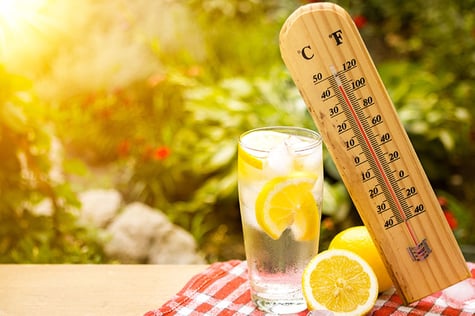
When it comes to harsh weather, most people think of cold, snow, and ice. But, if you manage a building in a warmer climate, you probably define harsh weather a little differently: blistering sun and heat punctuated by occasional rain and wind. And, since a roof’s main job is to protect the building and everything inside it, choosing the right low-slope roofing system for your climate is a business imperative.
Last month, we talked about some of the most common choices for low-slope roofing systems. Now that summer is on its way (and, if you live in a warmer climate, it’s probably already here), let’s look at low-slope roofing options from a different perspective: Which are best suited to sunny, hot summers?
Spray Polyurethane Foam (SPF)
SPF roofing systems have been used in the American Southwest – where facilities managers have learned a thing or two about the impact sun and heat can have on a building – for more than 45 years. For one thing, SPF roofs are tough, able to stand up to punishing temperature extremes. They have one of the highest r-factors among available roofing systems, and thermal resistance can be increased simply by making the foam layer thicker. They’re also reflective, and, in warm climates, a reflective roof can cut a building’s heat gain by as much as 50%.
Polyvinyl Chloride (PVC)
PVC roofs have been around long enough to establish a reputation for being both reflective and durable. Because of that, they’re a popular choice in warmer climates. They’re wind-resistant, which provides a good hedge against summer storms. They’re also shrink-resistant, which helps protect against temperature fluctuations.
Thermoplastic Polyolefin (TPO)
TPO roofing systems are the new kid on the block, and they’ve become increasingly popular, thanks to their energy-efficient, heat-reflective qualities. In addition, TPO roofs last a long time, because they can stand up to the damaging effects of ozone and UV rays. In addition, white TPO roofing systems exceed the requirements for the U.S. Department of Energy’s Energy Star rating.
Ethylene Propylene Diene Monomer (EPDM)
While EPDM roofs might not have the reflective qualities of some other roofing systems, they excel when it comes to hot-weather durability. They’re designed to withstand temperatures up to 212F without cracking, they can stretch up to 300% to accommodate temperature changes, and they’re resistant to both UV light and ozone. Those qualities are evident in their popularity: They account for about 40% of the commercial roofing market.
Modified Bitumen
Built-up roof (BUR) roofing systems have long been popular for commercial buildings. Modified bitumen, a newer offshoot, is fortified with rubber or plastic polymers that increase its reflectivity. That both extends the life of the roof and enhances energy efficiency.
Choosing the right low-slope roof for your commercial building is a balancing act. You have to weigh factors like cost, maintenance requirements, longevity, and energy efficiency. Climate also plays a huge role. If you’re considering purchasing a new low-slope roof in a warm climate, these roofing systems should be on the short list of options you consider.





